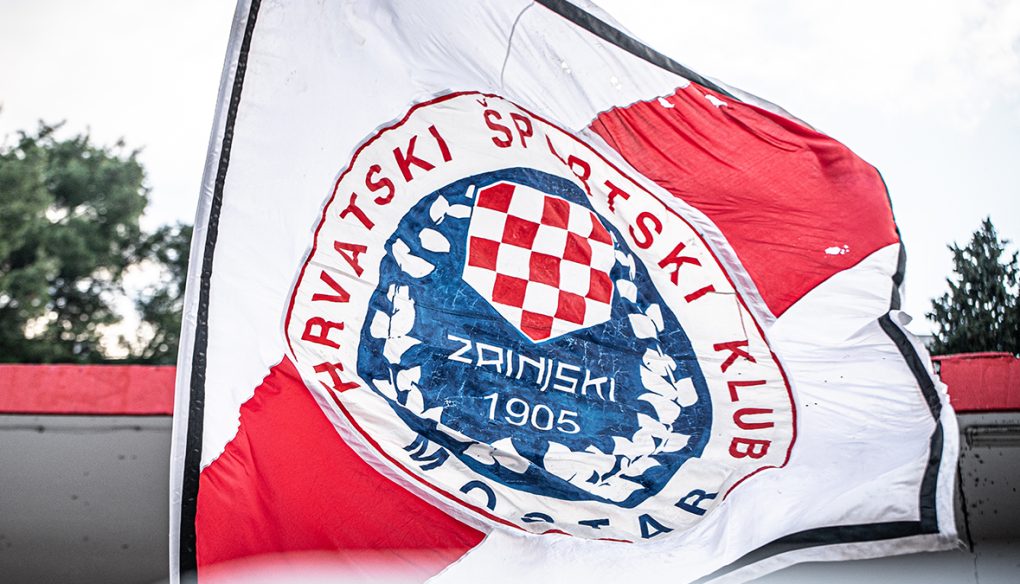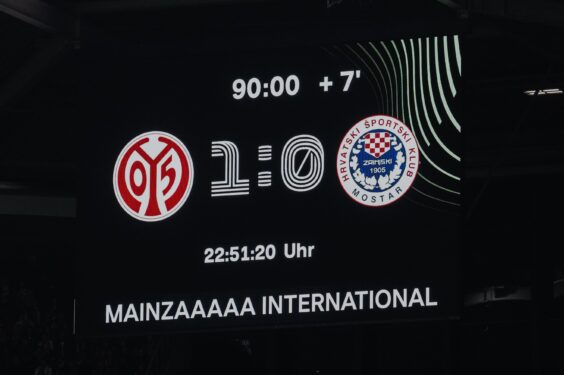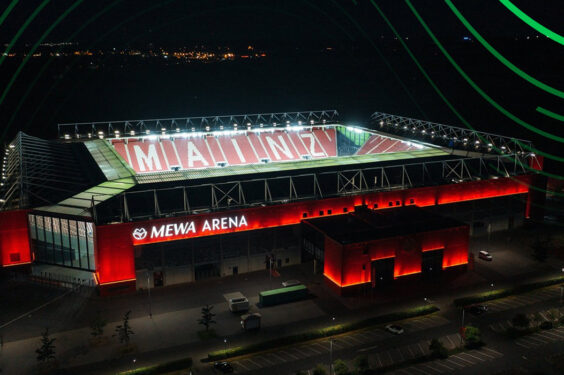HŠK Zrinjski Mostar was established in 1905 and is the oldest football club in Bosnia and Herzegovina. We are currently holding 9 championship titles and 3 BiH Cup titles. We’ve ended the season 2024/2025 in the first place and won the BiH Supercup. Two years ago, we were also the first team from Bosnia and Herzegovina to qualify for a UEFA Group Stage competition (UEFA Europa Conference League).
Main contact: Dario Marić
Email: zrinjski@hskzrinjski.ba
Matchday Operations: Mario Pandža
Email: zrinjski@hskzrinjski.ba
Media and Ticketing: Marko Boras
Email: digital@hskzrinjski.ba
Press: Damir Suton
Email: press@hskzrinjski.ba
HŠK Zrinjski Mostar Online:
Official website in english: hskzrinjski.ba/en/
Official Facebook page: hsk.zrinjski
Official Instagram page: hsk.zrinjski
Official X account: hskzrinjski
Official Club Logo:
Interesting facts
Bosnia and Herzegovina Championships:
2005, 2009, 2014, 2016, 2017, 2018, 2022, 2023, 2025
Bosnia and Herzegovina Cups:
2008, 2023, 2024
Bosnia and Herzegovina Supercups:
2025
UEFA Competitions:
2023/2024 – First team from Bosnia and Herzegovina to play in the group stage of any UEFA competition. Our team played in the UEFA Europa Conference League with Aston Villa, AZ Alkmaar and Legia ending the group stage with four points from six games.
Nemanja Bilbija has the most appereances in the history of our club and is also the best scorer in the history. He is currently the captain of the team and named the best player of the domestic competition.
The current coach is Igor Štimac, who is in charge since since July 2025.
Luka Modrić played his first professional season in HŠK Zrinjski Mostar during the 2003/2004 season. He won the fans award “Filip Šunjić – Pipa”.
HŠK Zrinjski Stadium

Stadium Name: HŠK Zrinjski Stadium
Stadium Address: Stjepana Radića 45, 88000 Mostar, BiH
Stadium Capacity: 7.255
Away Sector Capacity: 400
Since 1958, when the first match was played there, it has been the stadium where FK Velež played their home games, while the Nobles began writing their history there in 1994, during the match against NK Mladost Dubint (NK Široki Brijeg) in the finals playoff for the champion of Herzeg-Bosnia.
Located in the central part of the city, it is the second-largest stadium in Bosnia and Herzegovina in terms of capacity, behind the Asim Ferhatović Hase Stadium in Sarajevo.
Before the installation of seated seats, it could accommodate over 20,000 spectators, whereas today the capacity is significantly smaller. The main stand (lower west) can accommodate 4,875 spectators, the upper west stand has a capacity of 2,380 seats, and currently, the eastern stand is under construction. Until 2023, it was the “Standing Tribune,” where the Nobles’ most loyal fans, the Ultras, cheered them on.
Within the stadium complex, there is an administrative building with official premises, including dressing rooms. Behind the southern goal, there is a training ground primarily used by the HŠK Zrinjski Football School.
Away Fans
The away sector is placed on the upper west tribune and has a capacity of 400 seats. It has a seperate entrance and is equipped with toilets, a ticket point, food, drinks and a parking space for organised bus arrivals. Expected ticket price depends on the competition phase, but is usually between 10 and 20 EUR.
HŠK Zrinjski Mostar has a practice of pre-arranging the ticket sales process for away fans. The visiting club is responsible for its fans. Ticket sales are conducted exclusively through the visiting club, which will handle them.
HŠK Zrinjski Mostar can provide the visiting club with online vouchers, pdf tickets, physical tickets, and a ticket point at the entrance to the away section. If asked, HŠK Zrinjski Mostar can recommened special fan zones for away supporters on matchday.
VIP, CAT1 and Away Sector Infographic
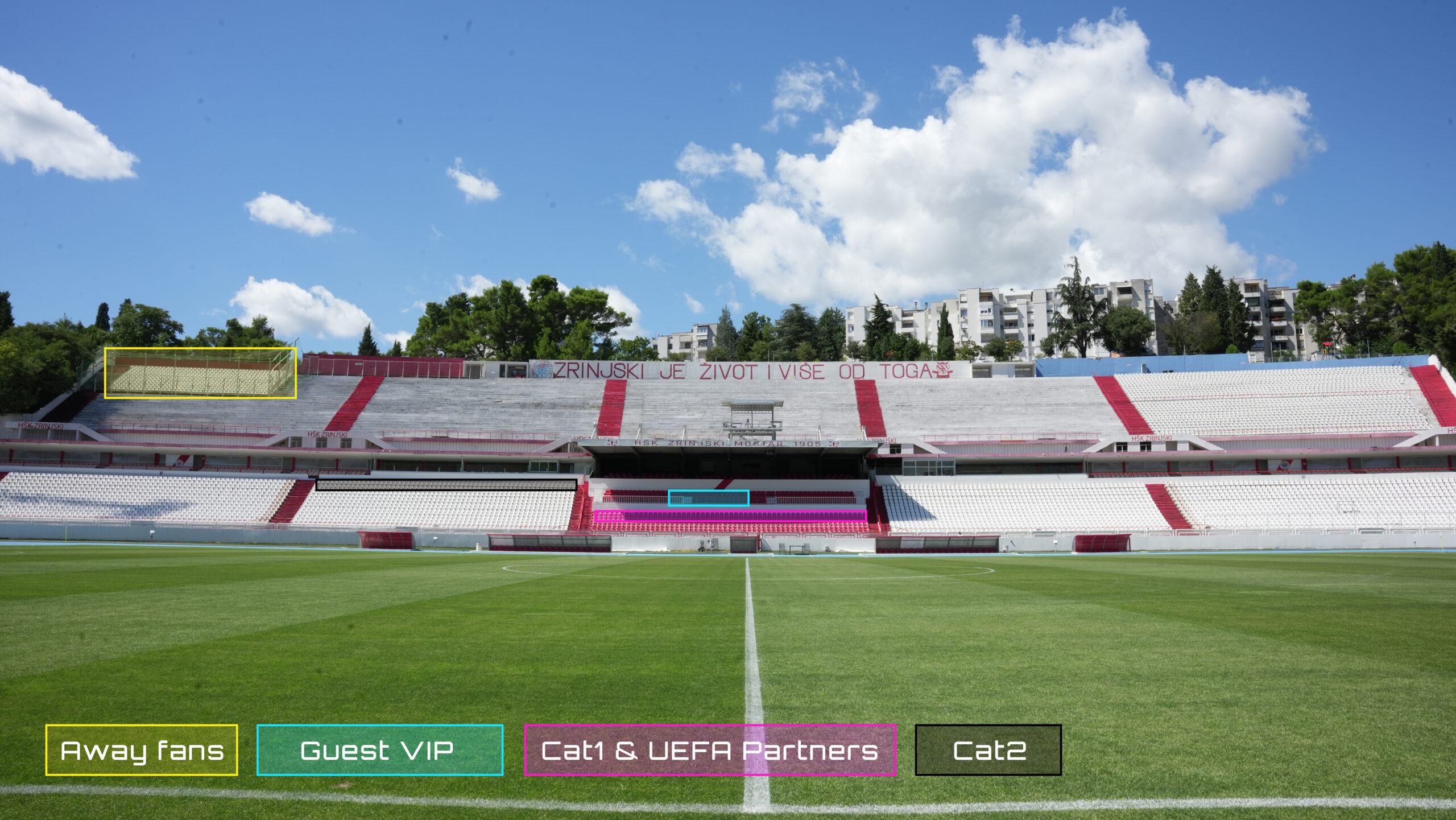
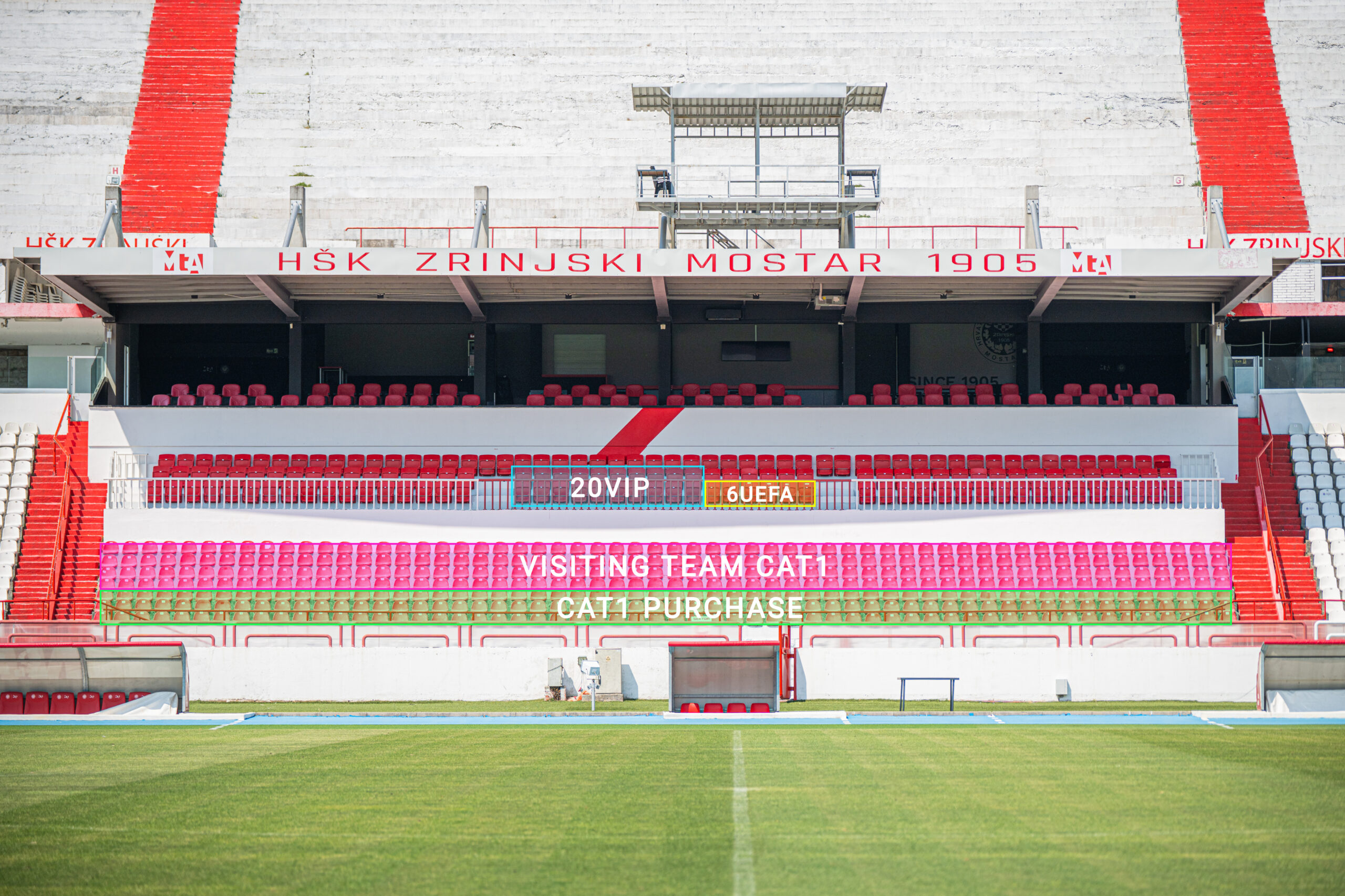
2025/2026 First Team Jerseys

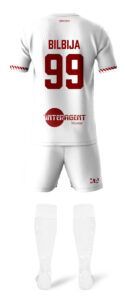
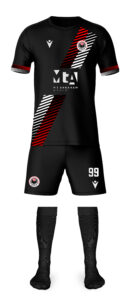




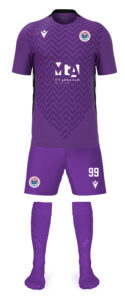
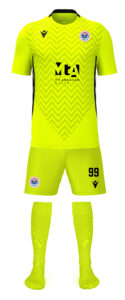
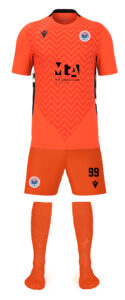
HŠK Zrinjski Mostar History
In 1905, within the premises of the Croatian Cultural Society Hrvoje in Mostar, Croatian youth, led by Professor Stjepan Kuštreba, founded the “Student Sports Club,” which seven years later, in 1912, evolved into the “High School Football Club” Zrinjski.
By 1914, with the outbreak of the First World War, all societies were banned, including sports activities in Mostar. HŠK Zrinjski resumed its activities in 1922. In the following two decades, dozens of top footballers wore Zrinjski’s jersey, and despite the disruption caused by the Second World War, the club continued its operations and even participated twice in championships organized by the then Croatian Football Association.
Zrinjski played its last friendly match in March 1945, and then, by the decision of the new communist authorities, further activities of Zrinjski were banned due to its national identity.
The club’s activities remained prohibited until the advent of democracy in the early 1990s. Then, after a full 47 years of prohibition, Hrvatski športski klub Zrinjski Mostar was re-established through the formation of the “Initiative Committee for the Preparation of the Renewal Assembly” in Međugorje, and resumed its activities!
The first match after the renewal of operations was played by the Nobles on September 30, 1992, at the Gospin Dolac Stadium in Imotski against NK Croatia Zmijavci. After numerous friendly matches, Zrinjski officially began competing in the competitions organized by the Football Association of Herzeg-Bosnia in 1994.
Since then, Zrinjski has competed in three different leagues – the First League of Herzeg-Bosnia, the Premier League of the Federation of Bosnia and Herzegovina, and since 2002, in the unified Premier League of Bosnia and Herzegovina, always in the highest tier.
The first league title was won in the 2004/2005 season, during our 100th anniversary celebrations, and following this historic title, we have managed to win the league title eight more times (2009, 2014, 2016, 2017, 2018, 2022, 2023), making us the most successful club in the premier league history.
Since 1994, several hundred footballers have played official matches wearing the sash, including Luka Modrić, who later won the Ballon d’Or.
Of course, Zrinjski’s good results domestically have also established the club as a regular participant in UEFA competitions. Since our first appearance in Europe in 2000, we have played more than seventy European matches, and in the 2023/2024 season, we became the first club from Bosnia and Herzegovina to qualify for the group stage of a UEFA competition, namely the UEFA Europa Conference League.
Read more about our history here.
Transportation connectivity
Mostar, located in the heart of Bosnia and Herzegovina, enjoys good transportation connectivity with significant airports in the region. The nearest airport is Mostar International Airport, just a few kilometers from the city center. This airport offers direct flights to several European destinations, facilitating travel to and from Mostar. In the past seasons, it was also used by all football teams who arrived to Mostar with charter flights.
Close by, travelers can also utilize airports in Dubrovnik and Split, which are approximately a 2 to 3-hour drive away by car or bus. Dubrovnik Airport, known for its international connections, provides a wide range of flights to European and global destinations. Similarly, Split Airport offers numerous travel options.
For travelers preferring larger airports, Sarajevo is also relatively close, about a 2-hour drive from Mostar. Sarajevo International Airport serves as a key hub for air traffic in Bosnia and Herzegovina, with regular flights to many European cities.
Hotel Accommodation
Mostar offers a range of accommodations, catering to various preferences and needs. Among the notable hotels in the city are Hotel Mepas, Hotel Mostar, Hotel Buna, and City Hotel. Important: Be sure to book your accommodation on time as there is high demand during summer season.
Hotel Mepas stands out with its modern amenities and convenient location near the Mepas Mall, providing luxury and comfort for both business and leisure travelers. It offers spacious rooms, a wellness center, and conference facilities.
The Hotel has 16 Classic and 56 Superior Rooms, 2 of which are fully adjusted to persons with disabilities. There are 14 Superior Suites at your disposal as well, plus the exclusive Presidential Suite. At your disposal are rooms with double or twin beds.
Contact: info@mepas-hotel.ba
Hotel Mostar, centrally located in the the city, offers a blend of traditional charm and contemporary comfort. Guests enjoy easy access to the Old Bridge (Stari Most) and other cultural landmarks, making it ideal for exploring Mostar’s rich history.
The hotel has 32 rooms.
Contact: recepcija@hotelmostar.ba
Hotel Buna, nestled along the Buna River, offers a tranquil setting with scenic views. This boutique hotel emphasizes personalized service and a relaxing atmosphere, perfect for those seeking a peaceful retreat.
A total of 40 deluxe rooms as well as 3 modernly equipped suites offer the perfect balance of comfort, elegance and style. Its facilities will meet all your expectations of a luxury 4* hotel.
It is ideal for accommodation of organized groups of guests due to the wide range of possibilities of additionally organized services with 36 deluxe double rooms, 4 triple rooms, 3 suites and the option of connected rooms.
Contact: info@hotelbuna.com
City Hotel, located in the heart of Mostar, offers a convenient stay with modern rooms and amenities. Its proximity to shops, restaurants, and cultural sites makes it a popular choice for travelers looking to immerse themselves in the city’s vibrant atmosphere.
Contact: Here
City Of Mostar

The city of Mostar, located in the southern part of Bosnia and Herzegovina on the banks of the Neretva River, is the cultural and economic center of Herzegovina.
It is considered one of the most beautiful cities in Bosnia and Herzegovina, and according to the latest census, it is home to 105,797 residents, making it the fifth largest city in the country.
Mostar emerged in the late Middle Ages in a transitional area from the lowlands of Herzegovina to a mountainous region, on the estate of the Kosače family. It began as a settlement around a wooden bridge protected by two fortresses. The earliest written mention of Mostar dates back to April 3, 1452, when it was described by Dubrovnik correspondents as a small settlement with two towers around a wooden bridge secured by chains.
Under the Ottoman Empire, Mostar flourished from the second half of the 15th century until the second half of the 19th century, continuing to develop under the Austro-Hungarian Monarchy thereafter.
Mostar is renowned for its bridges, notably the Old Bridge built in 1566. Alongside the old town, it has been a UNESCO World Heritage site since 2005, one year after its reconstruction.
Located 120 kilometers from Sarajevo, the capital of Bosnia and Herzegovina, Mostar is also only 27 kilometers away from Međugorje, a famous Marian pilgrimage site attracting numerous visitors from around the world.
Mostar’s international airport is just 7 kilometers from the city center, having gained its international status in 1984 when it served as an alternative airport for Sarajevo during the Olympic Games.
Today, Mostar is home to 25 primary schools, 20 secondary schools, two universities, and numerous cultural institutions.
Since 2021, Dr. Mario Kordić has served as the mayor of Mostar.
As the largest city in Herzegovina, Mostar is a hub for sports, hosting numerous professional and amateur sports clubs.
Of course, the most popular sport in Mostar, situated on the Neretva River, is football (soccer). Alongside HŠK Zrinjski, the most successful with eight Bosnian championships, FK Velež also represents Mostar in the top tier of BiH football.

